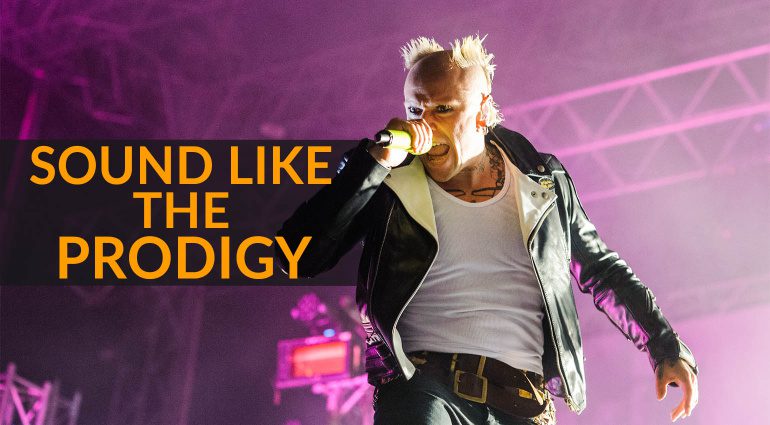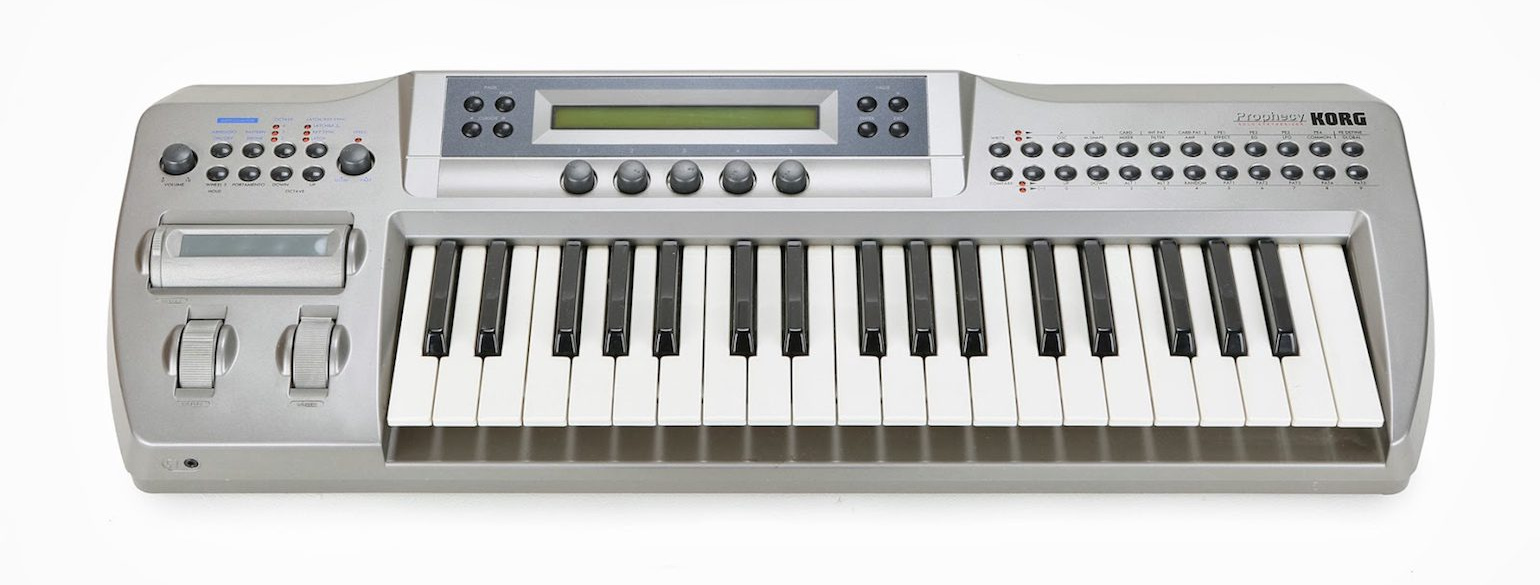Warehouse meets your house: How to sound like The Prodigy
Without a doubt one of the most impactful electronic acts of the 1990s, The Prodigy concocted their own brand of industrial breakbeat EDM and swiftly took it to a global audience.
Not only was this due to Liam Howlett’s unique approach to music production, but the hard-hitting nature of the records and live shows meant they could play festivals such as Rock Am Ring and Wacken Open Air, which weren’t ever geared toward electronic music.
Creating the sound of The Prodigy
For a band named after a synth, it’s easy to get fooled into thinking synthesizers were the focal point of The Prodigy’s sound. In actual fact, the true genius of the music comes from Liam’s record collection and his appreciation for Hip-Hop sampling.
The anthemic synth hooks are certainly a feature, but classics like Voodoo People, Breathe, and Mindfields are all built around the innovative reconstitution of existing drum breaks and melodic elements from other records.
The use of digital sampling didn’t stop there either, because often individual drum hits and even synths were resequenced with old-school samplers simply to attain the character of the sound they produce.
Let’s take a look at some of the key gear choices that became the method in the madness:
Roland W-30
When it was launched in 1989, the Roland W-30 was a groundbreaking workstation that combined sampling, sequencing, and synthesis into a single keyboard. As he was looking for a sequencer, Liam got hold of one right away and it soon became his primary songwriting tool.
The gritty 12-bit digital sampling engine is responsible for the characteristically industrial sound of the early Prodigy releases. The workflow clearly resonated with Liam, as he continued to use the W-30 in live shows, even after he found other solutions for sequencing.
The W-30 was in use until The Fat Of The Land in 1997 when the post-production was done on Cubase for the first time.
- More from Roland


Boss SE-70
Another not-so-secret weapon in The Prodigy’s arsenal was the Boss SE-70 multi-effects unit, introduced in 1993. Although it wasn’t particularly innovative or affordable, it did have an outstanding selection of effects algorithms, including a vocoder, ring modulator, and pitch tracker.
Although designed for guitarists, there was a huge wealth of effects that could be used on any instrument, with up to 16 effects per algorithm. The SE-70 also had some hidden tweaks for getting interesting distortion effects when you set the reverb mix on full, and this made it essential to The Prodigy’s sound, especially on The Fat Of The Land.
You won’t easily find such an extensive multi-effects unit in an accessible price range these days, but the Roland VT-4 certainly produces some exciting results.
- More from BOSS


Korg Prophecy
The noxious-sounding Prophecy was one of Korg’s early forays into virtual analogue synthesis in 1995. It might be monophonic, but this monster is equipped with 13 DSP-based oscillator algorithms – which included VPM(similar to FM) and physical modeling – and a workstation-level synthesis engine.
Programming this beast took some patience, but once you got the hang of the rather tedious interface you could create some absolutely ridiculous sounds. It was used extensively by Howlett on The Fat Of The Land, where you can hear it distinctively on Firestarter and Smack My *itch Up.
The Prophecy takes a unique approach to synthesis, which you can still do to a certain extent on the Korg Modwave.
- More from Korg


E-mu SP-1200
The SP-12 and SP-1200 samplers are easily some of the most influential music-making tools ever built. The uniquely chunky sound instantly appealed to Howlett, who was a big fan of Hip-Hop sampling and used the SP-1200, particularly for one-shots and individual drum hits.
You can hear it on the drum break intro to Firestarter, or the retriggered drumbeat of Spitfire where the Lo-Fi character still manages to get pushed to the front of the mix. From Daft Punk and the French House movement to RZA and the Wu-Tang Clan, the sound of SP-1200 has become a timeless part of music production history.
Although SP-1200 was reissued, you can get great results using the workflow of the Elektron Digitakt. You can read more about getting the old-school sampler sound here.
- More from E-mu


Clavia Nord Lead
If you’re not familiar with the Nord sound, it’s an incredibly raw and lively virtual analogue synth that rose to prominence in the 1990s. It was used for leads and effects on Funky Sh*#, and also became a regular fixture in The Prodigy’s live rig.
Nord synthesizers provide a relatively straightforward interface for creating sounds and, being digital, you don’t get some of the inconsistencies and maintenance headaches you would normally associate with vintage analogue synths.
Nord synthesizers were also used by Nine Inch Nails during The Fragile era, so you can be sure they have the ability to cut right through the mix.
The original Nord Lead was discontinued back in 1997, but you can get similar results with the modern Nord Lead A1.
- More about Nord


Which of your favourite artists would you like to see in our sound-alike series? Please let us know in the comments below!
More about The Prodigy:
- The Prodigy Official Page
- Samples used by The Prodigy
- More sound-alikes
- Everything vintage
Video:
You are currently viewing a placeholder content from YouTube. To access the actual content, click the button below. Please note that doing so will share data with third-party providers.
You are currently viewing a placeholder content from YouTube. To access the actual content, click the button below. Please note that doing so will share data with third-party providers.
You are currently viewing a placeholder content from YouTube. To access the actual content, click the button below. Please note that doing so will share data with third-party providers.
You are currently viewing a placeholder content from YouTube. To access the actual content, click the button below. Please note that doing so will share data with third-party providers.
You are currently viewing a placeholder content from YouTube. To access the actual content, click the button below. Please note that doing so will share data with third-party providers.
*Note: This article contains promotional links that help us fund our site. Don’t worry: the price for you always stays the same! If you buy something through these links, we will receive a small commission. Thank you for your support!
2 responses to “Warehouse meets your house: How to sound like The Prodigy”

 3,6 / 5,0 |
3,6 / 5,0 | 














I heard that Liam did a lot of the Prodigy recordings with Propellerhead‘s Reason DAW. But even if you have all the studio tools, you will never sound like this band because they had a very special culture, taste, background, and the ability to create a very individual artistic result!
Ahh, love the Prodigy so thank you for putting this together 🙂